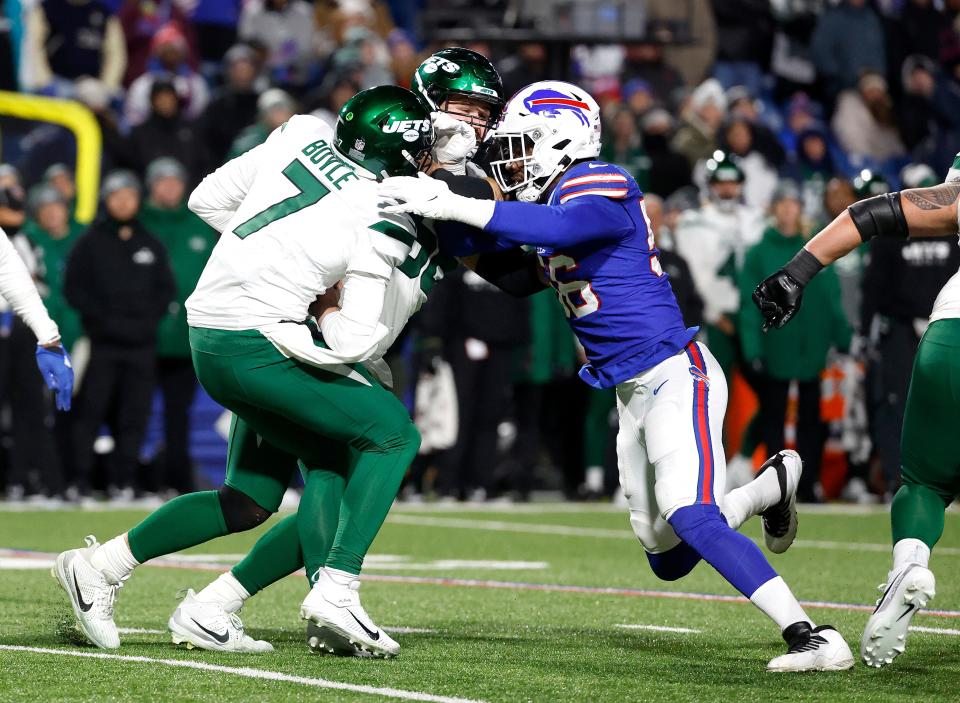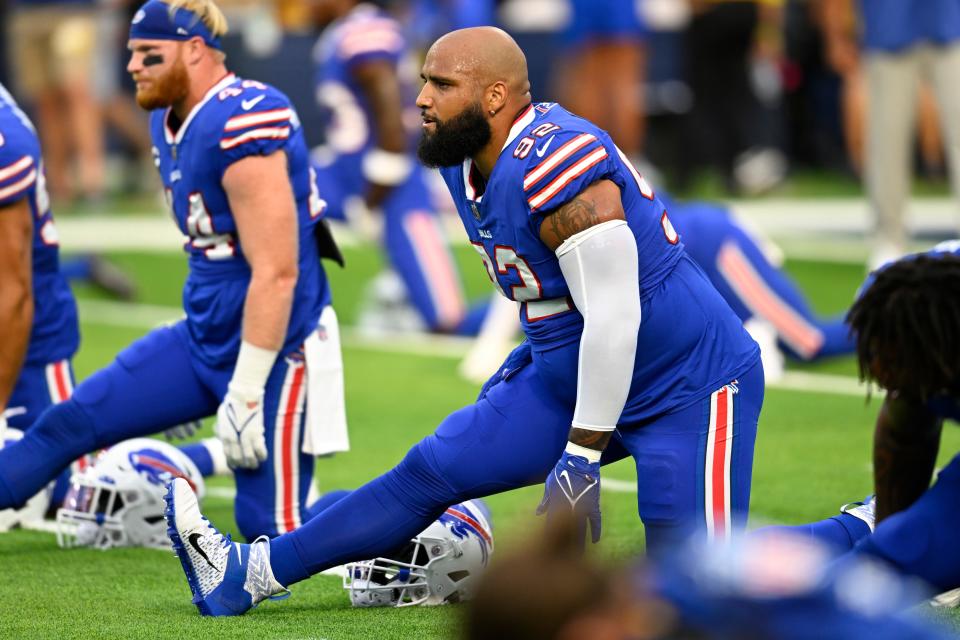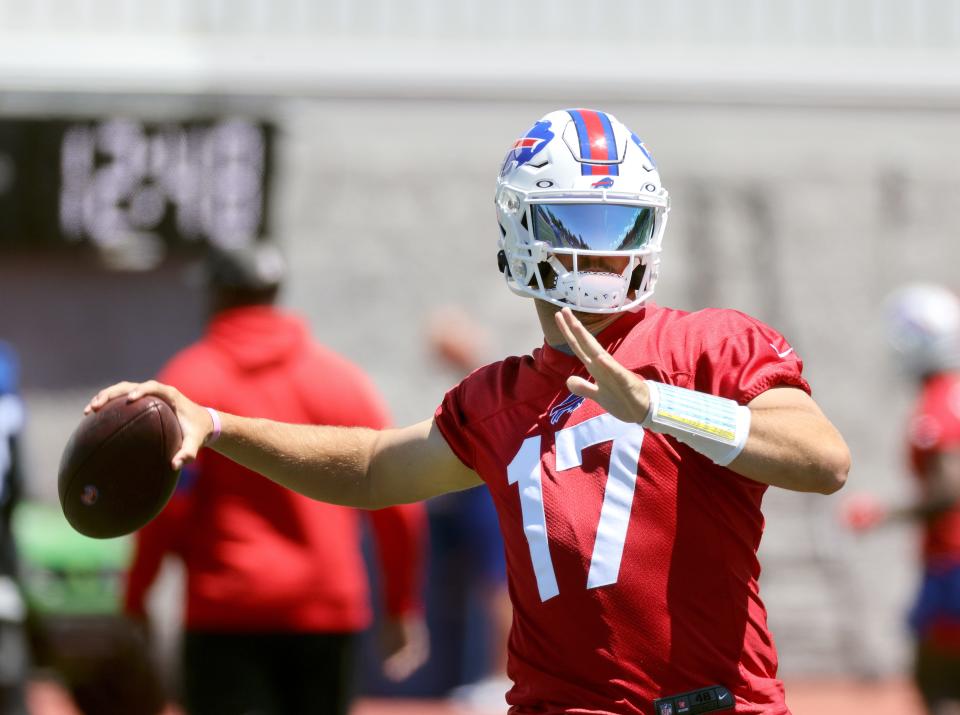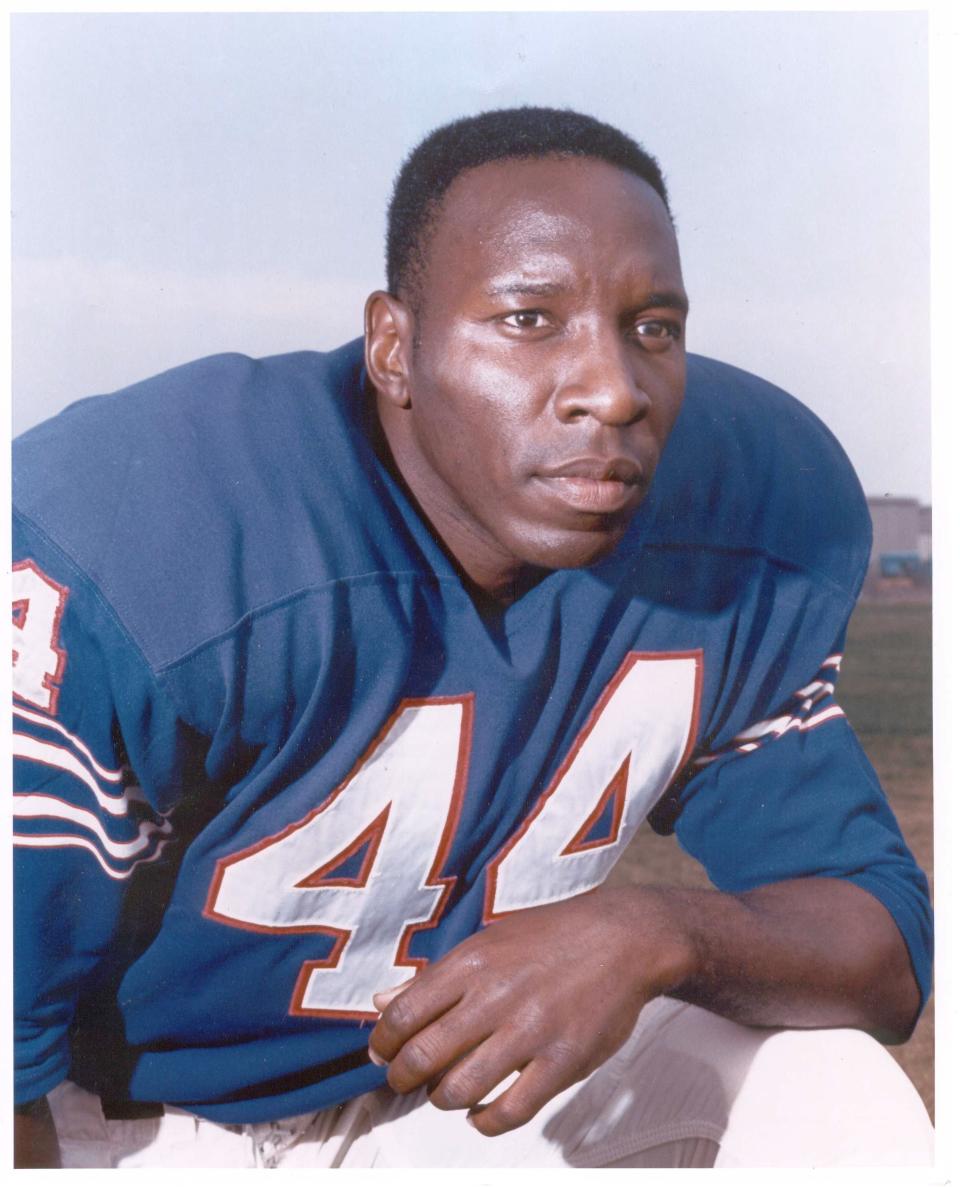The 2023 NFL season is over: Here's a primer for what's to come in the next couple months
Now that the Kansas City Chiefs - sigh - have won another Super Bowl, the 2023 season is done and we can now look ahead to 2024.
The NFL really doesn’t have an offseason anymore; it’s a year-round bonanza and the only actual dead time is the five-week stretch between the middle of June when all offseason programs end, to late July when training camps open.
I thought I would get you up to speed on some of the key dates that are coming up on the NFL calendar with an explanation of what it all means.
Feb. 20: Teams can start tagging free agents

The NFL’s free agency period gets rolling next week when teams can use one of three tags in an effort to retain an impending free agent for one more year - the exclusive rights franchise tag, the non-exclusive tag, and the transition tag. They can only use one tag per year, and they must do so by March 5.
▶ The exclusive rights tag requires the team to offer a one-year contract no less than either the average of the top five salaries at that player’s position in the upcoming season, or 120% of the player’s previous year’s salary, whichever is greater. And here’s the key: The player really doesn’t have much recourse because the team has exclusive negotiating rights. If the player refuses the contract, he can’t sign with another team, so either he signs it, or he sits without pay.
▶ The non-exclusive tag requires the team to offer a one-year contract no less than the average of the top five salary cap hits (slightly different than actual salary) of that player’s position, or 120% of the player’s previous year’s salary, whichever is greater. However, the non-exclusive tag allows players to negotiate with other teams and if they receive an offer, their current team has the opportunity to match it in order to keep the player. If they opt not to do so, they’re entitled to receive two first-round draft picks in exchange.
Obviously, this almost never happens. Since 2012 it has been used four times Drew Brees by the Saints in 2012, Kirk Cousins by the Commanders in 2017, Dak Prescott by the Cowboys in 2020, and Lamar Jackson by the Ravens in 2023. All four stayed with their team because no one wanted to part with two first-round picks.
▶ The transition tag works like this. The salary is based on the average of the top 10 highest-paid players at a position and the current team has the chance to match the offer, but if it does not, there is no draft pick compensation coming back. The team simply loses the player.
So as an example for the Bills, if they wanted to use the exclusive franchise tag on edge rusher Leonard Floyd, the estimated cost right now (before the final salary cap is determined) would be $23.3 million. If they wanted to use it on defensive tackle DaQuan Jones, the cost is around $19.7 million. Both players earned $7 million last year, so in their case, 120% of that salary falls well below the tag values. If they wanted to use the transition tag, Floyd would cost $20.1 million and Jones $15.7 million.
Feb. 27: NFL Scouting Combine begins in Indianapolis
The league announced that 321 of the top draft eligible college prospects have been invited to participate in the yearly event.
The players will sit down with GMs and coaches for brief private meetings; will go through a thorough physical examination by a neutral medical staff at a local Indianapolis facility; conduct media interviews; and then go into Lucas Oil Stadium where they will perform in a variety of position-specific drills under the watchful eye of coaches, GMs, personnel directors and scouts.
March 11-13: Free agency negotiations begin

From noon on Monday, March 11 through 3:59 p.m. on Wednesday, March 13, representatives of impending unrestricted free agents can converse with interested teams who the player did not play for the year before.
This is often referred to as the “legal tampering period” which sounds weird because it is allowed and no longer tampering. It is during this time when many free agent deals are put together, and because of the world we live in, the news breaks constantly, even though none of the deals become official until the new league year begins at 4 p.m. on that Wednesday and teams announce them.
By that point, we will already know where most of the big-name players are going. Also, any trades that may have been worked out since the end of the 2023 season until this point become final as of 4 p.m.
When the league year starts, all teams must be under whatever the final salary cap figure is. Right now, that’s projected to be around $242 million and as of this week, the Bills are approximately $51 million over. To comply, they will need to cut certain high-salaried players, or re-work several contracts to lower the 2024 salary cap hits by converting base pay of those players into bonus pay and then spreading that money out into future years. The old “kick the can down the road” philosophy which Brandon Beane dislikes, but also knows that he has no choice but to employ.
The Bills, for instance, will almost certainly do this with Josh Allen’s contract as his salary cap figure jumps to $47 million this year. He’s set to make around $23.5 million in base, but all but the league minimum of that can be converted to create space on this year’s cap.
Among the players who could be cut to create cap space: Mitch Morse would save about $8.4 million, Tre’Davious White would save around $6 million, Jordan Poyer about $5.4 million, and Deonte Harty around $4.2 million.
In addition to Allen, other players who could be in line for restructures are Morse, White, Dion Dawkins, Rasul Douglas and Taron Johnson.
April 15: Offseason workouts can begin

Teams with returning head coaches like the Bills can bring their players to the practice facility to start their offseason programs. These are voluntary, but in past years the Bills have usually had near 100% participation for at least a portion of the offseason. Stefon Diggs was the only player who skipped all of the voluntary work.
There are three phases that occur over an approximate two-month stretch.
▶ Phase one is two weeks of just meetings, physical rehab for injured players or those coming off a surgery, and on-field strength and conditioning drills sans helmets and pads with only those specific coaches (so no Sean McDermott and the primary football staff).
The on field time is limited to 90 minutes and the maximum length of time at the facility can’t exceed four hours. QBs can throw to receivers but they can’t be covered; kickers and punters can do their thing but no one can catch their kicks as return men; and defensive players cannot be involved with anything having to do with the ball.
▶ Phase two lasts three weeks and the same rules apply as phase one except all coaches are allowed on the field for individual or group instruction and drills (no helmets or pads), and any offense vs. defense drills are only walk-throughs. No live contact is permitted.
▶ The four-week third phase is where things pick up. The first three weeks are designated as organized team activities and teams can’t have more than 10 OTA days. During these sessions helmets are allowed, but there is no live contact during 7-on-7, 9-on-7, and 11-on-11 drills.
The final week is designated as the only mandatory attendance part of the program, the mini-camp. Mondays are for physicals, and teams can then practice for three days, though many teams (including the Bills) usually cut it short after two days. Each day can consist of 3 ½ hours of practice time - one full session and a second walk-through. Again, helmets only, no pads.
April 25-27: NFL Draft
This year it will be held in Detroit. The first round kicks off at 8 p.m. on Thursday, April 25, the second and third rounds commence at 7 p.m. Friday, and the final four rounds begin at noon Saturday.
After the combine and then leading up to the draft, teams will spend a good chunk of March and April on the road attending school pro days or private workouts with players, and they can also bring up to 30 players to their own facility for a more personal and intensive visit.
The Bills are expected to receive a compensatory third-round pick for losing Tremaine Edmunds in free agency last year, so that will give Beane 10 picks to start with. He has the Bills’ original picks in the first (No. 28 overall), second, fourth, fifth, sixth and seventh rounds. Then he has the third-round compensatory, a fifth-rounder from the Packers, and sixth-rounders from the Texans and Rams.
May 2: Fifth-year option decision
All rookies sign four-year contracts when they are drafted, but first-round picks have a fifth-year team option attached. If the team wants to retain that player one more season before he can hit the unrestricted free agent market, they exercise the option.
This can only be done once, after the player has been in the NFL three seasons. So that means all 2021 first-round picks are eligible this year and for the Bills, that’s edge rusher Greg Rousseau.
I fully expect that Beane will use it on Rousseau. Once he does, the salary is based on what position the player plays, his previous level of playing time, and Pro Bowl selections. For Rousseau, the current estimate has the Bills being on the hook for around $13.8 million.
This week’s Bills birthday: Elbert Dubenion

The man they called “Golden Wheels” was the Bills’ first true star. He joined the team in its inaugural AFL season in 1960 and he was one of the only reasons why anyone would have wanted to watch the ragamuffin Bills in their first few years of existence.
Funny thing about Duby is that he thought after his very first professional game, his career might be over. In the opening game, a 27-3 loss to the New York Titans at the Polo Grounds, “I dropped about four or five balls and fumbled a handoff from Tommy O’Connell on a reverse,” Dubenion recalled to me many years ago. “Buster (Ramsey, the head coach) didn’t take too kindly to that. I didn’t think I’d make it past that first game.”
Ramsey fought off the urge to waive the speedy, brick-handed receiver from tiny Bluffton (Ohio) College, and his instincts proved correct. The following week, the Bills lost their first home game, 27-21 to Denver, but Dubenion caught touchdown passes of 53 and 56 yards. “Buster said I was a pro then,” Dubenion said. “I was too afraid not to believe him.”
The raw rookie solidified his spot on the Buffalo roster that day, and he went on to a stellar nine-year career, all of it with the Bills.
Dubenion had scored 57 touchdowns in college, and the Cleveland Browns chose him in the 14th round of the 1959 NFL draft. However, after suffering a sprained knee during training for the college all-star game, he never reported to the Browns training camp. The following year, Dick Gallagher, who left Cleveland to become the Bills’ first general manager, remembered Dubenion from the Browns’ rookie camp and he signed him to a contract.
Early in training camp in East Aurora, quarterback Johnny Green said of Dubenion, “Man can’t catch, but he’s got those golden wheels” and Dubenion could not disagree.
“Yeah, he didn’t say I had golden hands,” Dubenion recalled with a laugh. “They thought I was a defensive back I was knocking down so many balls. Johnny Mazur was the receivers coach and he used to keep me after practice and it paid off. He’d throw me 200 or 300 balls after practice. I’d have my back to him, then I’d turn around and he’d throw at me. He told me, ‘Either catch or work for a living.’’’
Dubenion started catching, and when you combine sure hands with eye-popping speed, the results were devastating. By the time 1964 arrived, Dubenion was one of the most feared receivers in the AFL, standing alongside San Diego’s Lance Alworth, New York’s Don Maynard, Oakland’s Art Powell, and Denver’s Lionel Taylor.
And during that first AFL championship season, there was no one as dangerous as Dubenion. He averaged 27.1 yards per catch, a single-season mark that remains the best in pro football history. He caught 42 passes for 1,139 yards and 10 touchdowns, and if not for a mild knee sprain that kept him out of two games at midseason and slowed him thereafter, his numbers would have been even better.
Dubenion suffered a season-ending knee injury during the third game of 1965 and therefore missed the Bills’ run to a second title, and he was never the same player thereafter, having lost a step after the surgery. He retired midway through 1968 and finished with 296 receptions for 5,309 yards and 35 TDs, numbers that don’t look all that impressive until you realize it was the 1960s, and passing games weren’t what they are today.
He later worked 11 years as a Bills scout until Chuck Knox became head coach in 1978. He left Buffalo for the Dolphins, then came back after Knox was gone and it was Dubenion who found wide receiver Andre Reed at tiny Kutztown (Pa.) State, the player who went on to break all of his Bills’ receiving records.
Dubenion died the day after Christmas 2019 at the age of 86.
Thanks for subscribing to the Bills Blast newsletter, and remember, all the rest of my content can be found on our Bills page. If you want to follow me on Twitter, it's @salmaiorana, and if you want to email me, it's maiorana@gannett.com.
If you enjoyed the Bills Blast, please share it with a friend or family member, and if they would like to receive the newsletter, they can sign up here.
Our work isn't possible without D&C subscribers. If you are one, thank you. If you're not, please consider subscribing.
This article originally appeared on Rochester Democrat and Chronicle: The 2023 NFL season is over: Here's a primer for what's to come in the next couple months
